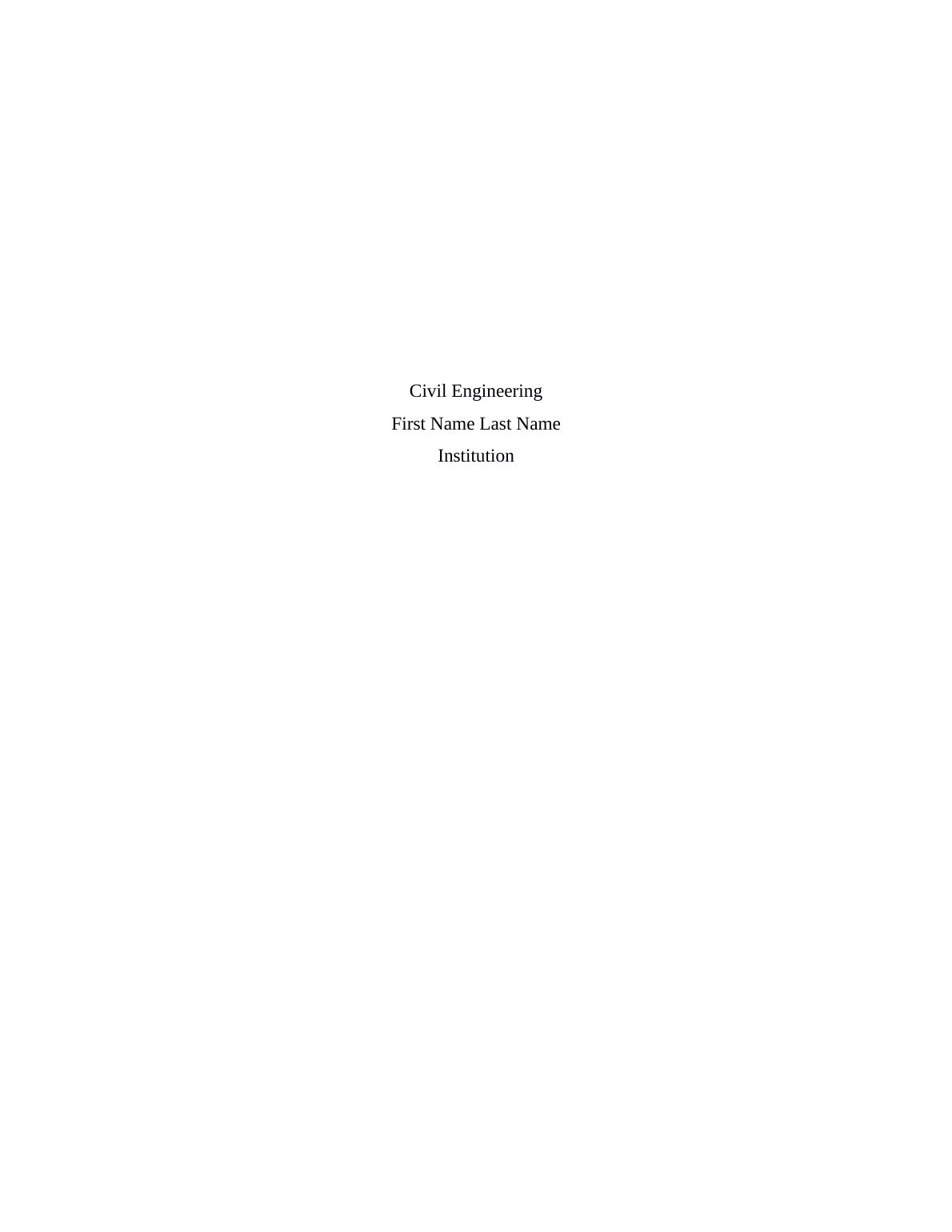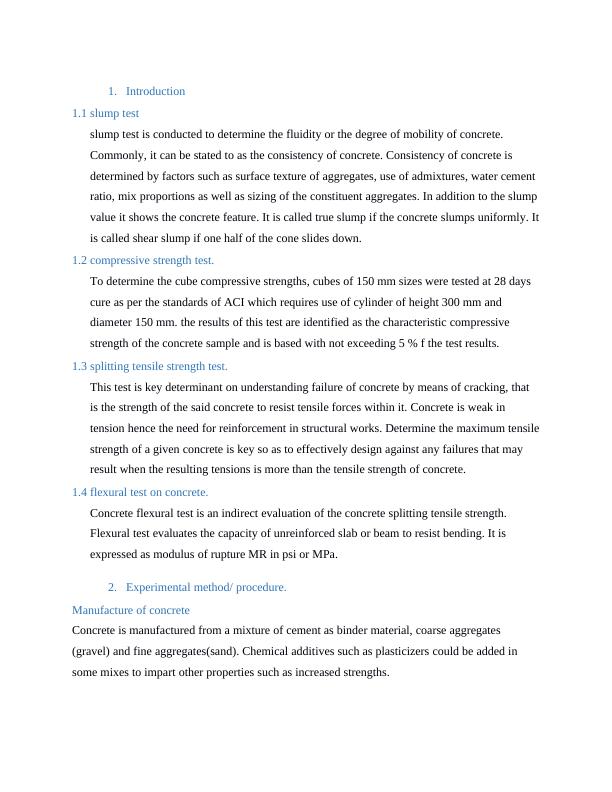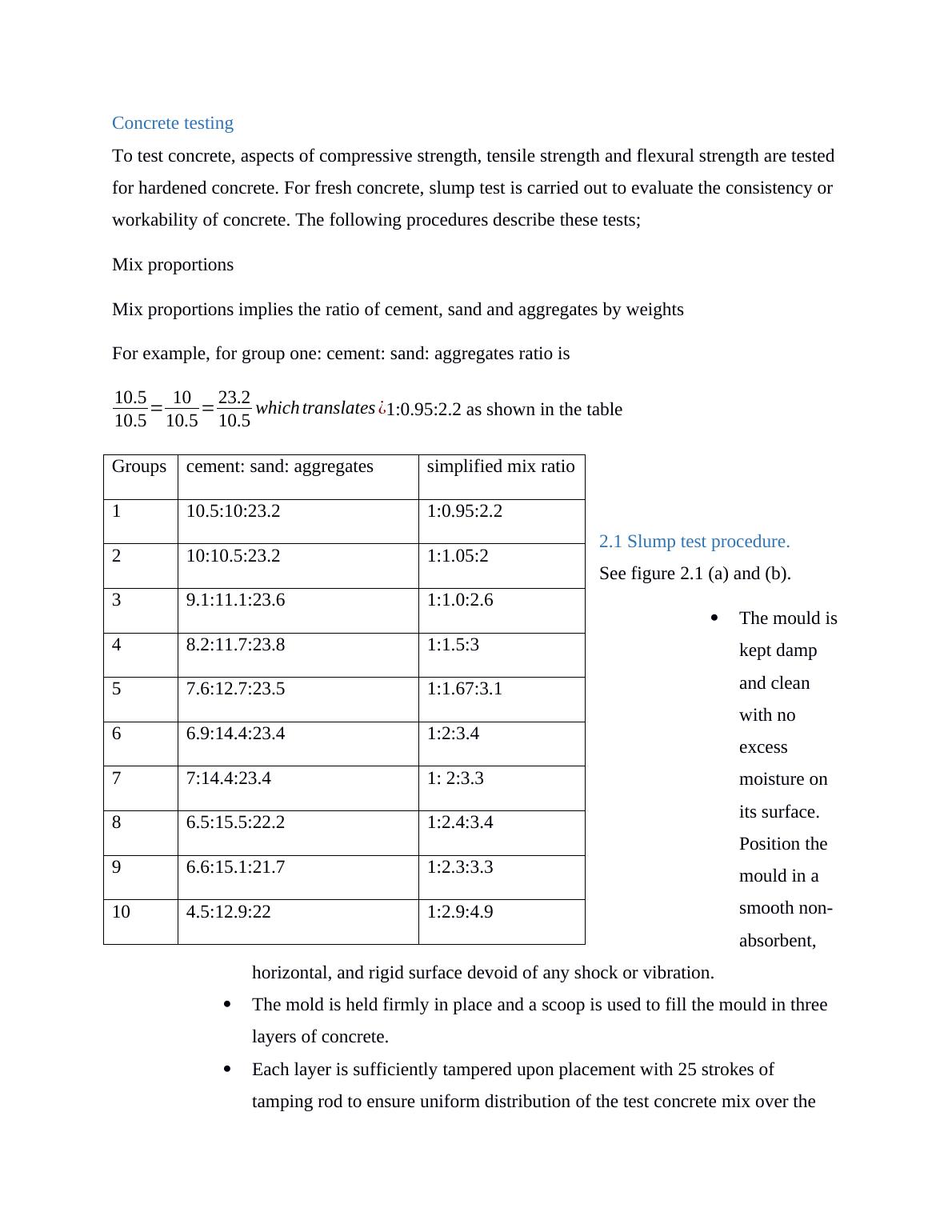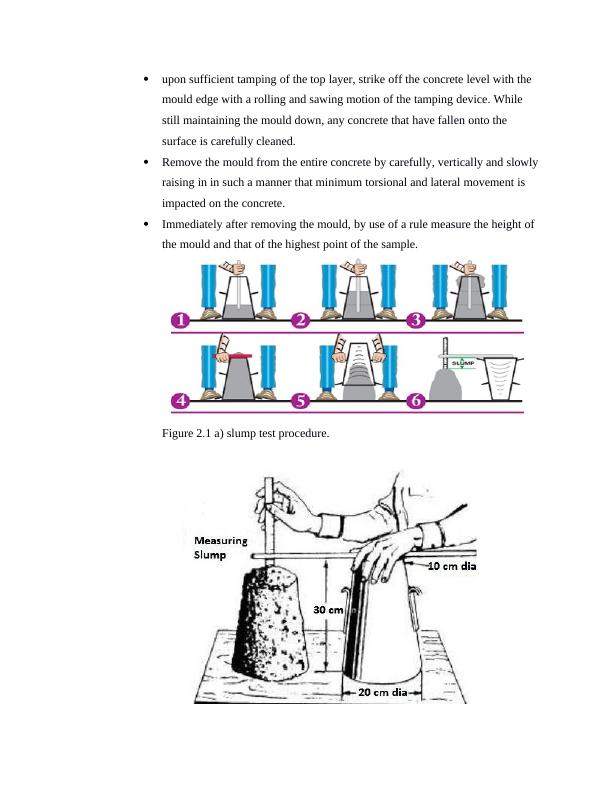Civil Engineering | Assignment
19 Pages2655 Words15 Views
Added on 2022-08-23
Civil Engineering | Assignment
Added on 2022-08-23
ShareRelated Documents
End of preview
Want to access all the pages? Upload your documents or become a member.
Concrete Mix & Cast Report - Design, Constituents, Results
|7
|1051
|442
Bendable Concrete 13 Running Head: Polyvinyl Alcohol in Creating a Bendable Concrete
|15
|3774
|405
Soil and Materials Lab Report on Concrete Mixing Ratio and Strength Testing
|16
|2506
|328
Stress-Strain Behaviour of Fibre Reinforced Concrete with Different Proportions of Polypropylene and Steel Fibre
|14
|1357
|50
Reinforced Concrete Concrete
|17
|6688
|153
Effect of adding nanoclay in concrete on the mechanical properties of nanoclay
|31
|8201
|52




